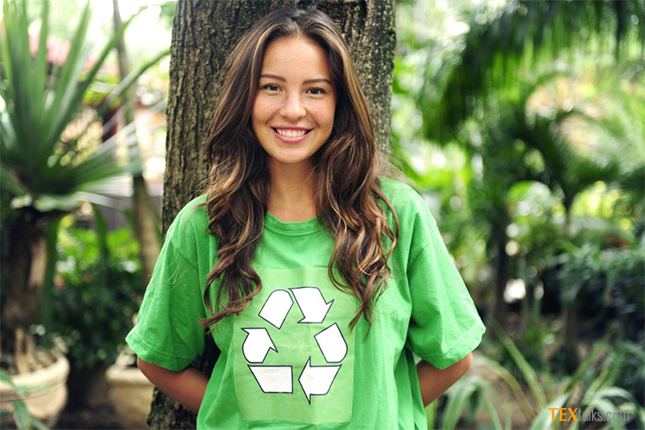After a paradigm shift in consumer behavior, Luxury brands need to start using responsible practices. The global fashion industry which employs 300 million workers worldwide across its value chain mainly comprising women between the age of 18 and 35 is also responsible for 10 percent of global emissions.
The US$ 24 trillion luxury fashion industry is set to re-strategize and incorporate sustainability as a core value in its business practices. The shift from extravagance to ethically-sourced and environmentally-viable products has started.
While the concept of fast fashion (mass-produced, low-priced fashion products, especially garments, usually carrying global brand labels) does hint at the social and environmental degradation it is capable of, consumer opinion generally differs for luxury fashion brands. Given their high price points and global reputation, consumers assume that these luxury products follow ethical and relatively more sustainable business practices and that their products would last longer and fetch better resale value. Disclosure of Corporate Social Responsibility (CSR) initiatives, eco-friendly product lines, and sustainable manufacturing processes by some leading luxury brands also contribute to such positive consumer perception. However, that has not been the case as the supply chains of even some of the top global brands, including Gucci, Dior, and Saint Laurent, can be traced back to vendors with dubious employment records, mainly in South Asia, which are often purposely kept hidden.
From the responsible use of natural resources to the ethical treatment of workers, sustainability aims to minimize negative impacts throughout the production process, ensuring the well-being of future generations. The journey of a single product involves an intricate network of suppliers, ranging from raw material producers and processors to certifying bodies, subcontractors, logistics providers, and retail outlets, before reaching the consumer. Each supplier performs a specific function within defined tiers, transforming raw materials into the final product.
In the multi-tiered fashion at tier 0, are the brand’s offices, distribution centers, and retail locations, where sustainability efforts can kick off with initiatives like adopting renewable energy sources and eco-friendly practices such as efficient energy consumption, textile reuse, reverse logistics, and ethical sourcing of recyclable fabrics. At Tier I, are the factories and facilities responsible for cutting, sewing, packaging, and preparing finished garments for shipment. Building strong relationships with Tier I suppliers is crucial to ensure compliance with garment worker rights and safety codes.
Tier II involves suppliers responsible for producing the fabrics used in manufacturing, often entailing chemical-, water-, and carbon-intensive processes with large-scale environmental and community impacts, especially from their hazardous waste disposal practices. Supply chain transparency, thus, is crucial for unraveling these complexities and aligning luxury fashion with sustainable practices.
Tier III deals with transforming raw materials into fibers, a stage with limited brand contact and visibility, making it challenging to assess human rights, animal welfare, and environmental implications. Lastly, Tier IV encompasses the sources of raw materials, such as cotton farms or livestock raising, where the impact reaches soil health, biodiversity, waterways, and air quality. Understanding and addressing risks at each tier are pivotal steps toward a more sustainable and responsible fashion industry. Supply chain transparency, thus, is crucial for unraveling these complexities and aligning luxury fashion with sustainable practices.
Globally, 83 percent of drinking water samples test positive for microscopic plastic fibers from laundry wastewater, with polyester garments shedding over 1,900 fibers per wash. Furthermore, 20 to 60 percent of all garments end up as waste within their first year, contributing to the staggering 13 million tonnes of textile waste generated annually by manufacturers and retailers. Approximately 30 percent of produced clothes still need to be sold each season.
activism movement established following Bangladesh’s Rana Plaza disaster in 2013, ranks 250 of the world’s largest fashion brands and retailers based on their public disclosure of human rights and employment policies and practices and their impacts across their operations and supply chains. The Index aims to hold the industry accountable for its actions.
The Fashion Transparency Index, prepared by Fashion Revolution, the United Kingdom in its 2022 edition of the Index revealed that only 23 percent of these brands and retailers made any such public disclosures, while just 7 percent disclosed wastewater test findings. Less than half of the Tier I manufacturers publicly disclosed their supplier lists. Various fashion houses in France, Italy, the United States (US), and the UK have acquired partial stakes in suppliers to achieve transparency. With growing incentives from the government in France, luxury brands have moved their operations to their home country to be able to track their supply chains. Similarly, Levi’s has adopted manufacturing processes to reduce water usage, while Patagonia introduced a recycled and organic clothing range to its product line.
Embracing supply chain transparency is no longer an option but a necessity for luxury fashion brands, which are aspiring for a more sustainable future. With consumer demand for sustainability on the rise, transparency can catalyze a sustainable revolution in luxury fashion.



